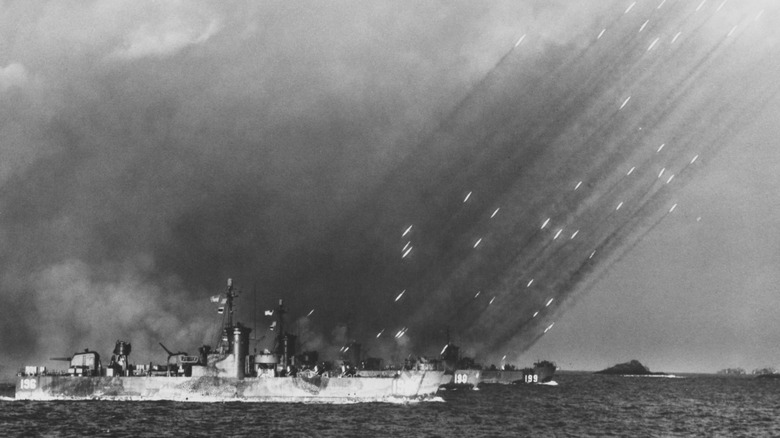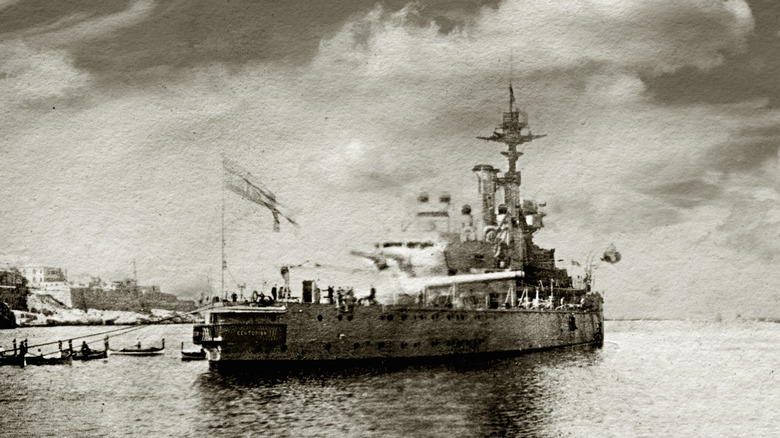The Design Flaw That Sank A Torpedo Boat (And Affected An Entire Class Of Warships)
While the World Wars brought their share of devastation to the world, many can agree that they also introduced a host of impressive gadgets and machinery that redefined the modern world. From the British development of the first tanks, the Mark I, in response to trench warfare, to the highly effective German U-boats that sank thousands of Allied ships in World War II, machines of war have become commonplace today, with many militaries across the globe using them.
In such a world, many inventors come together to create these machines. However, while some of their brainchildren typically see extensive application in war zones, a few often have significant design flaws that lead to entire vehicles, vessels, or weapons being recalled or completely stopping production. Among these is a Japanese torpedo boat with a significant design flaw that caused it to capsize. The flaw was the installation of excessively heavy armaments on the relatively light vessel, which ultimately led to its demise.
The entire ordeal, known as the Tomazuru incident, affected a whole class of warships, the Chidori-class torpedo ships. Interestingly, the ship that capsized did so during trials, not in active service. After the Japanese military reevaluated the flaw, four other completed Chidori-class ships were heavily modified to rectify the error, while the ones still in construction were outright canceled. But why and how did the incident occur?
The London Naval Treaty
Torpedo boats rose to prominence toward the end of the 19th century, when torpedoes proved an effective means of sinking large, often well-armed and armored water vessels. These boats, typically smaller and faster, were known for their maneuverability in the water, which placed them at an advantage against their larger counterparts. After the first World War ended, a conference dedicated to discussing post-World War I naval disarmament efforts took place in London in 1930.
Countries including the U.S., France, Japan, and Italy were present, with the focus of the conference being to review and establish clear limits on battleships and aircraft carriers. The outcome of this noble effort would be the London Naval Treaty, which established armament specifications and maximum tonnage limits, effectively categorizing war vessels into either heavy or light ships. As expected, some of the countries involved, namely Japan, appeared dissatisfied with the established limits.
One reason for this reaction may have been the cruiser tonnage limits, which set Japan's cap at 208,850 tons compared to the U.S. and the U.K.'s caps of 323,500 and 339,000 tons, respectively. Additionally, the ratio of non-offensive vessels allocated to each country was set at 10:10:7, with Japan receiving seven vessels compared to the U.S. and the United Kingdom's 10. As for heavy cruisers, the treaty granted Japan 12 vessels while the U.S. and the U.K. received 18 and 15 ships, respectively.
The Tomozuru capsizes
Japan decided to create a specific class of warships that would exploit loopholes in the treaty without violating the established agreement, which led to the birth of the Chidori-class torpedo ships. Torpedoes had already proven to be among the most lethal weapons a military could possess, possibly explaining why the Chidori-class ships were designed as torpedo boats. The Tomozuru was the third of the first four Chidori-class torpedo ships to leave the factory. It featured four torpedo tubes and a displacement of under 600 tons.
The initial brilliance of the Chidori-class, which would ultimately be the reason the Tomozuru sank, lay in its heavy armaments combined with the ship's relatively light build. While this might have looked good on paper, it significantly raised the ship's center of gravity, undermining its stability, particularly in unpredictable weather. In 1934, while en route to Sasebo port, rough weather exposed this structural flaw, and the Tomozuru capsized.
The Japanese Navy led a search and rescue for the vessel and its crew, and after a few hours, found and brought the ship and survivors to Sasebo port. The Navy also had to rethink its approach to designing its ships, especially the Chidori-class.


